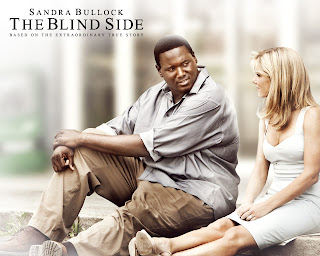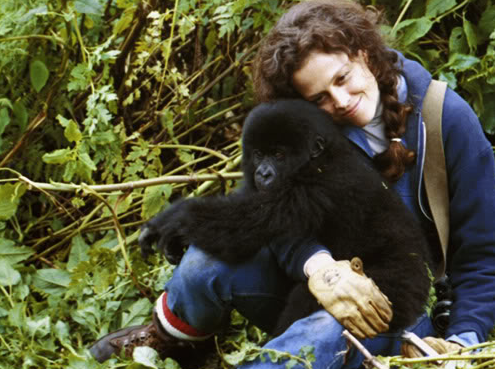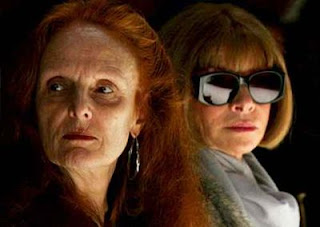Degrassi
Call for Writers: Reproduction and Abortion in Film and Television
Degrassi
The radical notion that women like good movies
This piece on The Blind Side, by Nine Deuce, first appeared at Bitch Flicks on March 23, 2011.
———-
 |
||||
| The Blind Side movie poster |
Let me say up front that I’m aware that I’m supposed to feel sorry for Sandra Bullock this week. She’s purported to be “America’s sweetheart” and all, she has always seemed like a fairly decent person (for an actor), and I think her husband deserves to get his wang run over by one of his customized asshole conveyance vehicles, but I’m finding it difficult to feel too bad. I mean, who marries a guy who named himself after a figure from the Old West, has more tattoos than IQ points, and is known for his penchant for rockabilly strippers? Normally I’d absolve Bullock of all responsibility for what has occurred and spend nine paragraphs illustrating the many reasons Jesse James doesn’t deserve to live, but I’ve just received proof in the form of a movie called The Blind Side that Sandra Bullock is in cahoots with Satan, Ronald Reagan’s cryogenically preserved head, the country music industry, and E! in their plot to take over the world by turning us all into (or helping some of us to remain) smug, racist imbeciles.
This piece on The Blind Side, by Stephanie Rogers, first appeared at Bitch Flicks on March 3, 2010.
———-
 |
| The Blind Side movie poster |
imdb synopsis, as composed by Anonymous:
The Blind Side depicts the story of Michael Oher, a homeless African-American youngster from a broken home, taken in by the Touhys, a well-to-do white family who help him fulfill his potential. At the same time, Oher’s presence in the Touhys’ lives leads them to some insightful self-discoveries of their own.Living in his new environment, the teen faces a completely different set of challenges to overcome. As a football player and student, Oher works hard and, with the help of his coaches and adopted family, becomes an All-American offensive left tackle.
The real synopsis, as composed by me:
The Blind Side depicts the story of a white woman who sees a Black man walking down the street in the rain. She tells her husband to stop the car, and he obliges—oh, his wife is just so crazy sometimes!—then, out of the goodness of her white heart, she allows him to spend the night in their offensively enormous home.Unfortunately, she can’t sleep very well—the Black man might steal some of their very important shit! But the next day, when she sees that he’s folded his blankets and sheets nicely on the couch, she realizes that, hey, maybe all Black men really aren’t thieving thugs.
Then she saves his life.
Click here to read the full piece on The Blind Side.
| Heart Like a Wheel (1983) |
This is a guest post from Melissa Richard.
 |
| Shirley Muldowney behind the wheel |
Directed by Jonathan Kaplan and written by Ken Friedman, Heart like a Wheel hits the high points of Muldowney’s rise to prominence in the racing world: her beginnings as an amateur drag racer (which she did for extra money as a young, newly married waitress); her desire and ability to race professionally with the help of her first husband, mechanic Jack Muldowney, and son John; her divorce from Jack and relationship with fellow racer / crew boss Connie Kalitta; the failure of that relationship and, of course, the movie’s climax in which Muldowney beats Kalitta to take the NHRA U.S. Nationals championship in 1982. Heart like a Wheel has a certain B-movie quality to it, but garnered a 1984 Golden Globe nomination Best Performance by an Actress for Bonnie Bedelia, who plays Muldowney in the film. While not tremendously popular at the box office, it received favorable critical acclaim at film festivals and, among racing aficionados at least, still holds significant underground popularity.
 |
| The “Cha Cha” version of Muldowney, 1972 |
Instead of developing important moments, like those in which she has trouble getting sponsorship because of her gender or struggles to make ends in the furious balance between a burgeoning racing career and a family, the film aims most of its dramatic focus on Muldowney’s romantic relationship with Kalitta. In all of the drama of her seven-year fling with her hot-headed, womanizing guy, the lines and scenes that purport to represent the barriers Muldowney broke down seem pale and artificial, like they’ve been inserted only for the sake of occasionally reminding the viewer that Muldowney had to put up with a lot of macho crap in order to race.
 |
| Connie Kalitta (played by Beau Bridges) in Heart Like a Wheel |
The relationship with Kalitta, of course, sets up the film’s narrative climax: the 1982 U.S. Nationals race in which Muldowney beat Kalitta to claim her third national title. They’d separated before the ’82 race, and the romance – in the film, but also to NHRA fans at the time—injects the duel with a provocative rivalry in which the little lady who can drive fast beats not just a male competitor, but a cheating, lying bastard. It’s one of those convenient moments from Muldowney’s life story that make for a good Hollywood story, but the real victory there is overlooked by the film. In 1982, no one had won three national NHRA titles and suddenly, someone had. And it happened to be a woman. This achievement, though, is lost behind the drama of Muldowney beating a former lover who treated her badly and, by the film’s end, you wonder if Heart like a Wheel was really about a woman breaking into the male-dominated world of racing to begin with.
 |
| Joan Rivers: A Piece of Work (2010) |
 , The Devil Came on Horseback
, The Devil Came on Horseback , and the forthcoming Burma Soldier, among others. It’s about a mouthy broad (and I love mouthy broads, women who speak their minds and aren’t afraid to put themselves out there), who is funny, and who has been at it since 1966. On the other hand, it’s yet another film about a wealthy white woman (I just watched and reviewed The September Issue, about Vogue editor-in-chief Anna Wintour) who lives like “Marie Antoinette, if she’d have had money.”
, and the forthcoming Burma Soldier, among others. It’s about a mouthy broad (and I love mouthy broads, women who speak their minds and aren’t afraid to put themselves out there), who is funny, and who has been at it since 1966. On the other hand, it’s yet another film about a wealthy white woman (I just watched and reviewed The September Issue, about Vogue editor-in-chief Anna Wintour) who lives like “Marie Antoinette, if she’d have had money.”| Gorillas in the Mist (1988) |
This piece is from Monthly Contributor Carrie Nelson.
 |
| Fossey represented as maternal |
This piece on American Violet, by Amber Leab, originally appeared at Bitch Flicks on April 5, 2010.
 |
| American Violet (2008) |
 |
| Poster Girl (2010) |
 |
| Monster (2003) |
“Well, I’ve walked these streets / A virtual stage it seemed to me / Makeup on their faces / Actors took their places next to me”
-Natalie Merchant, “Carnival”
 |
| Selby (Ricci) and Wuornos (Theron) at the roller rink |
 |
| Grace Coddington and Anna Wintour |
Martyna Przybysz is a Pole who resides in London, UK. She works in film production. This is her blog: http://martynaprzybysz.tumblr.com.